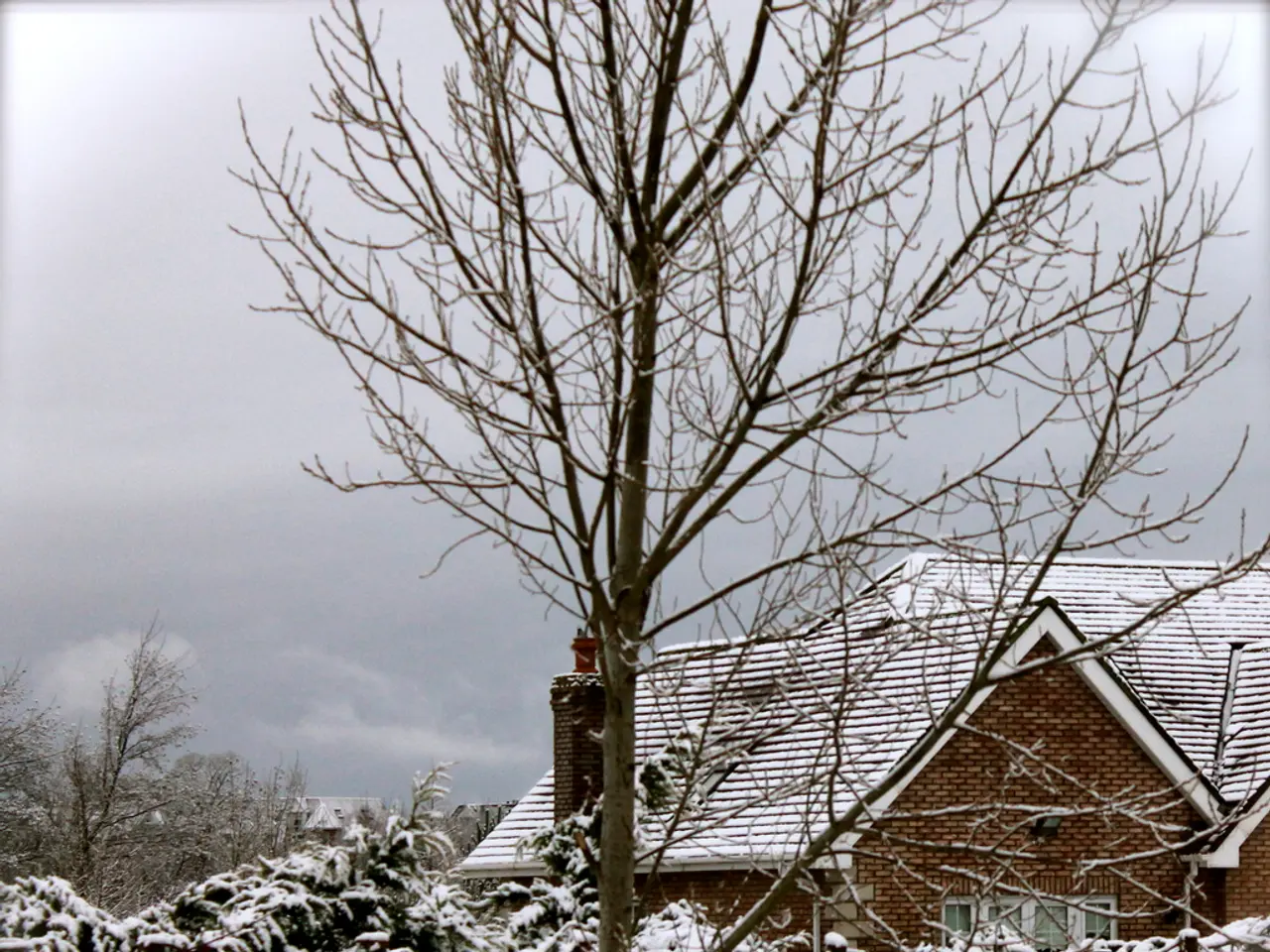Managing Winter Garden: Combating Winter Burn and Frost Injuries
Winter Damage in Plants: Understanding and Preventing Winter Woes
Winter can take a toll on plants, causing a range of issues from frost injury to desiccation and physical damage. Here's a guide to understanding the types of winter damage, prevention methods, and treatment strategies.
Types of Winter Damage in Plants
- Frost damage: Ice crystals form inside plant tissues, damaging cells and causing leaf, stem, or bud injury.
- Desiccation: Cold winter winds and frozen soil limit water uptake, drying out plants.
- Root damage: Prolonged frozen soil can kill roots or damage them.
- Snow mold: Fungal diseases develop under wet snow cover.
- Physical damage: Heavy snow or ice can break branches or stems.
Prevention Methods
To safeguard your plants, consider the following strategies:
- Bring potted plants indoors before frost to protect sensitive ones from freezing and desiccation.
- Mulch around plants: Apply thick mulch layers around the soil to insulate plant roots and maintain more stable soil temperatures, reducing risk of freeze injury.
- Cover plants with frost cloths: Use materials such as burlap, frost blankets, or horticultural fleece supported on stakes to shield plants from frost without direct contact that can damage foliage.
- Limit foot traffic on lawns: Avoid walking on dormant grass to prevent damage and compaction that worsens winter stress.
- Improve drainage: Ensures that water does not accumulate and freeze, causing ice damage to roots or crowns.
- Apply winter fertilizer: Strengthens plants and turf for the upcoming cold season.
- Use resistant plant varieties: For lawns and crops, choose species or cultivars that tolerate salt, frost, or disease better in winter conditions.
Treatment Strategies After Winter Damage
Should your plants suffer winter damage, here's what you can do:
- Remove debris: Clear away dead leaves, mold-affected debris, and broken stems to prevent disease and promote healthy new growth.
- Rake and aerate lawns: Helps remove dead grass and improves soil air and water flow to encourage recovery.
- Reseed or replant: If roots are killed, new planting may be necessary since dead grass or plants will not regenerate.
- Water and fertilize: Regular watering and appropriate fertilization support plant recovery and green-up after winter stress.
- Apply fungicides: For fungal diseases like snow mold or anthracnose, fungicides containing mancozeb or chlorothalonil can reduce infection with adherence to safety guidelines.
- Avoid overhead watering: To reduce fungal spore spread and improve leaf drying, help prevent disease proliferation.
In summary, preventing winter damage involves physical protection (mulching, covering, moving plants indoors), cultural practices (fertilizing, improving drainage, choosing resistant types), and limiting mechanical injury, while addressing damage after winter requires cleaning, repair (raking, reseeding), watering, fertilizing, and possible fungicide use to control disease and promote recovery.
- Frost damage affects leaves first, followed by small stems, branches, and eventually roots.
- Evergreens may turn yellow or bronze when exposed to intense cold and dry winds.
- Frost damage occurs when ice crystals form within plant tissues, causing cell damage.
- Intense pruning can stress out plants, so it's best to prune gently.
- Pruning browned or blackened foliage should be done after the threat of frost has passed to encourage new growth.
- Infestation from burrowing animals can occur during winter when food is scarce, and can be prevented by keeping the lawn grass-free and surrounding trees and shrubs with mulch.
- Stems and branches killed by frost will no longer sprout new growth.
- To prevent frost damage in home-and-garden plants, you can apply thick mulch layers around the soil to insulate plant roots and maintain more stable soil temperatures (Prevention Methods).
- Evergreens in your home-and-garden might turn yellow or bronze when exposed to intense cold and dry winds, indicating frost damage (Types of Winter Damage in Plants).




